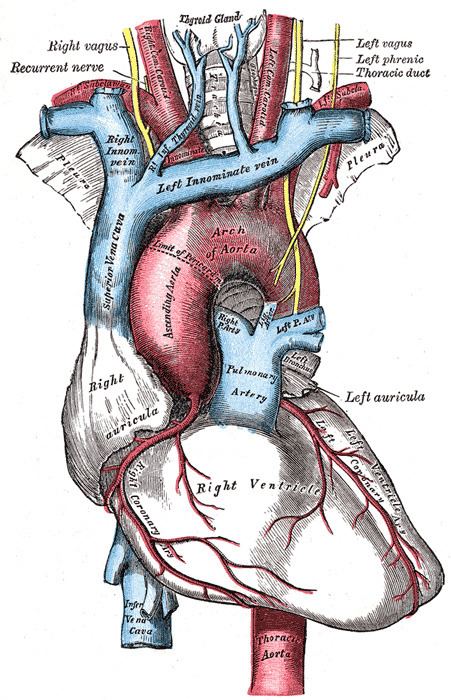Nerve Vagus nerve | Dorlands
/Elsevier b_17/12190576 | |
 | ||
Latin Glomus aorticum, corpora paraaortica MeSH A08.800.550.700.120.600.050 | ||
The aortic body is one of several small clusters of chemoreceptors, baroreceptors, and supporting cells located along the aortic arch.
Contents
Some sources equate the "aortic bodies" and "paraaortic bodies", while other sources explicitly distinguish between the two. When a distinction is made, the "aortic bodies" are chemoreceptors which regulate Circulatory system, while the "paraaortic bodies" are the chromaffin cells which manufacture catecholamines.
Function
It measures changes in blood pressure and the composition of arterial blood flowing past it, including the partial pressures of oxygen and carbon dioxide. The chemoreceptors responsible for sensing changes in blood gases are called glomus cells.
It gives feedback to the medulla oblongata, specifically to the dorsal respiratory group, via the afferent branches of the vagus nerve (X). The medulla, in turn, regulates breathing and blood pressure.
Disorders
A paraganglioma is a tumor that may involve the aortic body.
Swelling can also occur.
